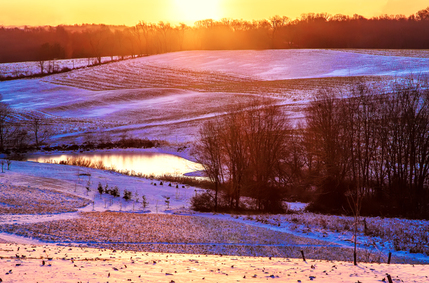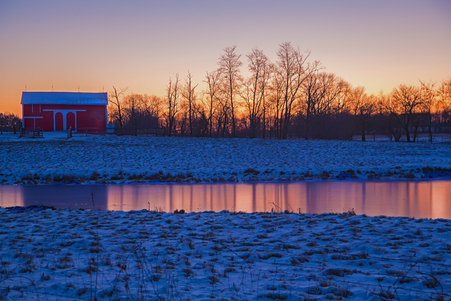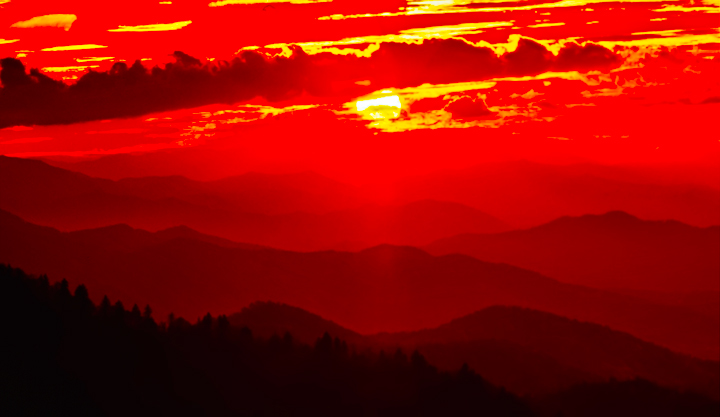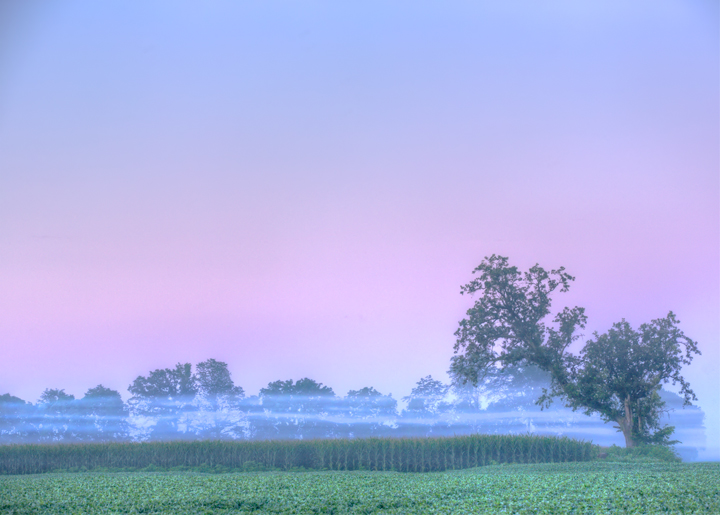|
Notes from the Field
|
The famous Impressionist painter Claude Monet would paint furiously for 15 minutes at this time of day, and then hand off that canvas and pull out a new canvas, because the light had now so changed, the scene was entirely new which meant a new canvas. Later he completed 8 – 12 canvases from one morning of intense painting.
The wonder of changing colors is the wonder of beauty. Back to Route 62. The sky is 2-3 stops brighter than the shadowed blue snow, the reflection in the water is 1 or 2 stops brighter than the surrounding snow. If I look at the sky and then the snow, my eyes have to adjust in order to see the snow. I might give this scene 10 minutes max and then a voice inside says, move on to the next vision of beauty—having no idea when that next wonder will appear. But it always does. At a crest two hills later the sun has risen an “inch” above a line of trees on a distant hillside, backlighting them. That alone is stunning. Then the light skips over the sloping field leaving the snow with the darker blue of night. The bending light touches a much closer stand of trees and it’s more like surrounding each branch with bent orange color. The curve of the slope then allows the bent pale orange light to land at my feet, along a crisp line separating me from the blue snow of the slope. I try everything that occurs to me: including the sun in the image, half the sun, none of the sun, only the intense glow. When the sun falls directly on the lens, internal reflections abound, less so with half, no reflections or sun spots when the lens excludes the sun entirely. Sometimes the sun’s light landing on the lens can be blocked by using my hand or a hat. This moment will never occur again; this photographer, in this place, this snow, and this rotation of the Earth. So I “paint” furiously. I try many possibilities and may create 150 images in 8 minutes. There are no re-takes possible. Again, the bending of the light, the shadows that accentuate the blue night still resting on the snow, all make for a rapidly changing scene of beauty and wonder, and brilliant and subtle color. Late risers can’t believe the colors are real, but then they’ve not gotten out the door before dawn. Sometimes I take 5 seconds to quickly turn my camera wheel to see if there is a progression I need to be aware of, in the next 100 shutter releases. I put the barn to the left, the middle, the right. I photograph vertically setting up several possible panoramas. To quote Wendell Berry, “It All Turns On Affection.” I love this land and this place and I want to bring back and share the beauty that surrounds us in its best possible light. Did I “doctor” up the photograph? No. I did, however, use some painfully learned skills in post-development, to tone down the overpowering light and bring out the shadows, in the same way I might hold my hat in front of my eyes to shield me from the sun and see the shadowy blue snow. Questions? Email me at [email protected] |



